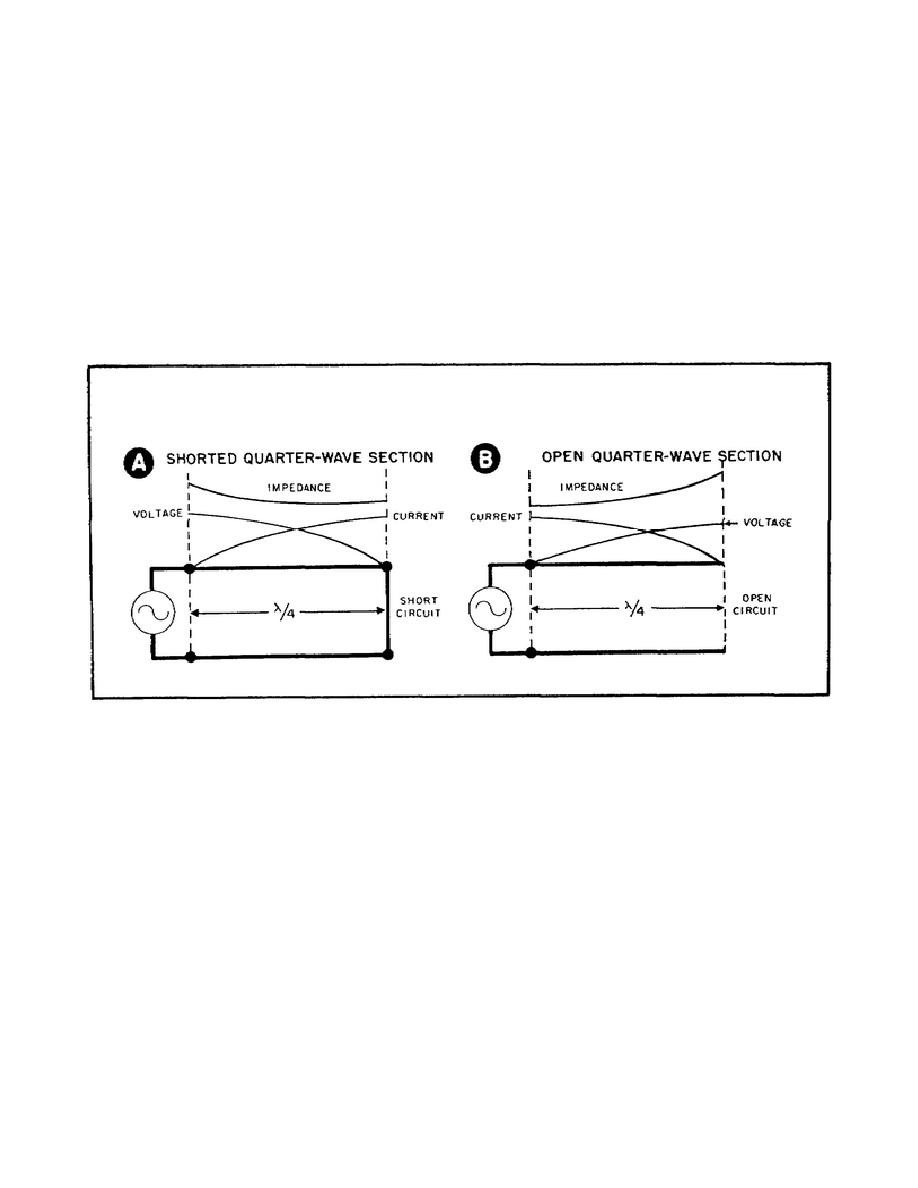
29. A section of transmission line acts like a resonant circuit.
a. Because of these impedance variations, a section of transmission
line can be used as a resonant circuit at ultra-high frequencies.
For
example, look at Part A of Figure 19 which shows the standing waves and
impedance variations on a short-circuited, quarter-wave transmission line.
the current is minimum at that point. A parallel-resonant circuit has the
same characteristics; that is, high voltage, low current, and high
impedance.
So the quarter-wave line is now equivalent to the parallel-
resonant circuit. Remember, however, that the quarter-wave line acts as a
parallel-resonant circuit only at the frequency which makes the transmission
line one-quarter wavelength long. At other frequencies, the line is not a
quarter wavelength, so the impedance decreases.
Figure 19. Voltage, Current and Impedance Variations
on a Quarter-wave Transmission Line.
b. Part B of Figure 19 shows voltage, current, and impedance variations
on an open-circuited, quarter-wave transmission line.
There is high
impedance at the open end.
But at the generator, the impedance is low
because the voltage is low and the current is high.
Low voltage, high
current, and low impedance are the characteristics of a series-resonant
circuit. So an open-circuited, quarter-wave line acts like a series-tuned
circuit.
30. Summary of the quarter-wave line.
a. A short-circuited, quarter-wave line acts as
a
parallel-tuned
circuit. It presents a high impedance to the generator.
22



 Previous Page
Previous Page
